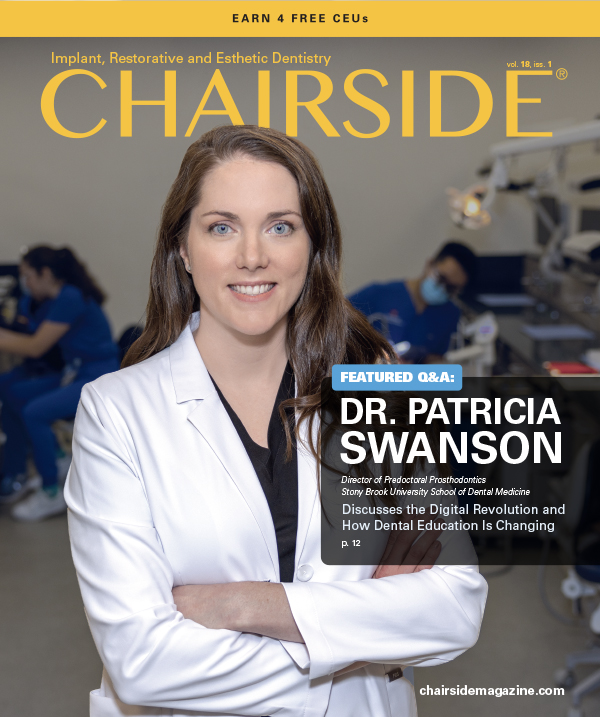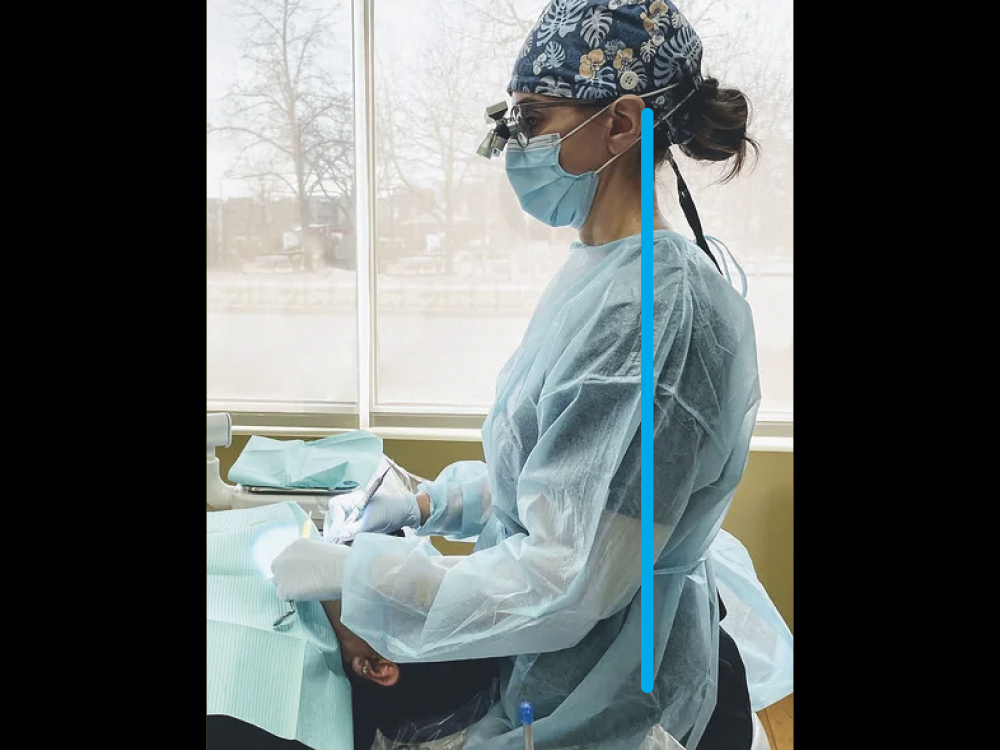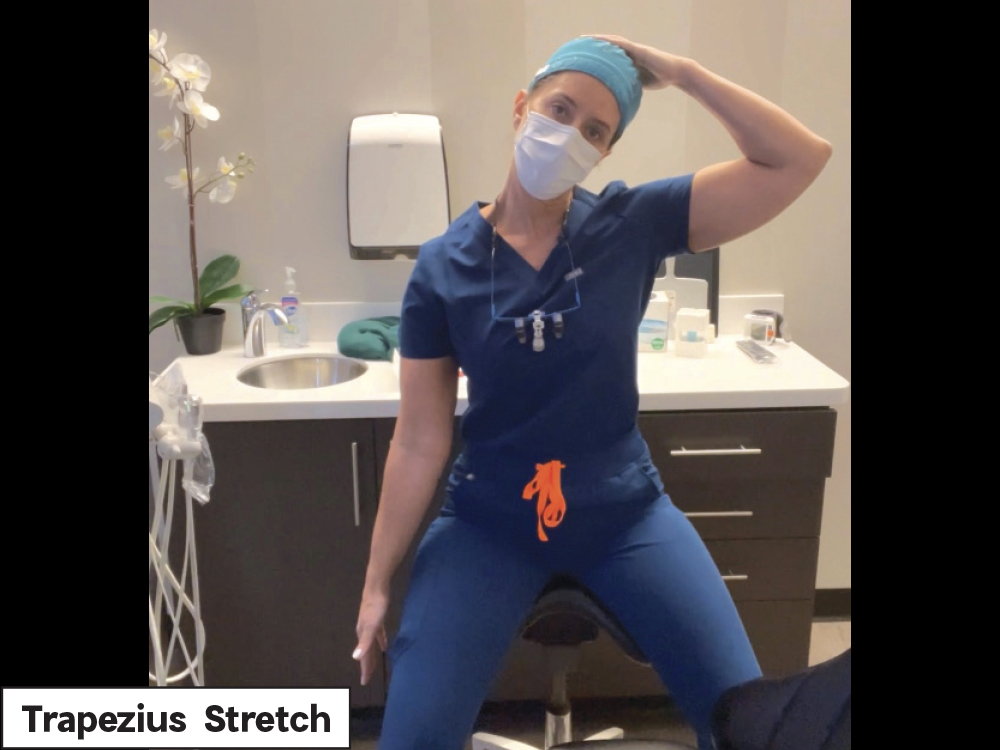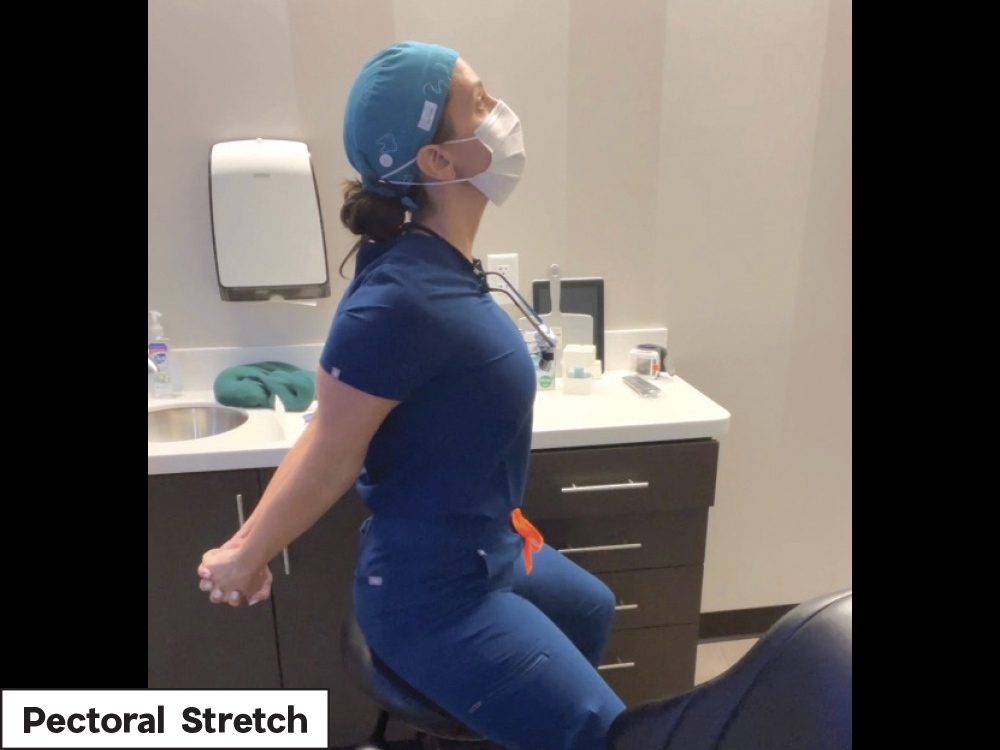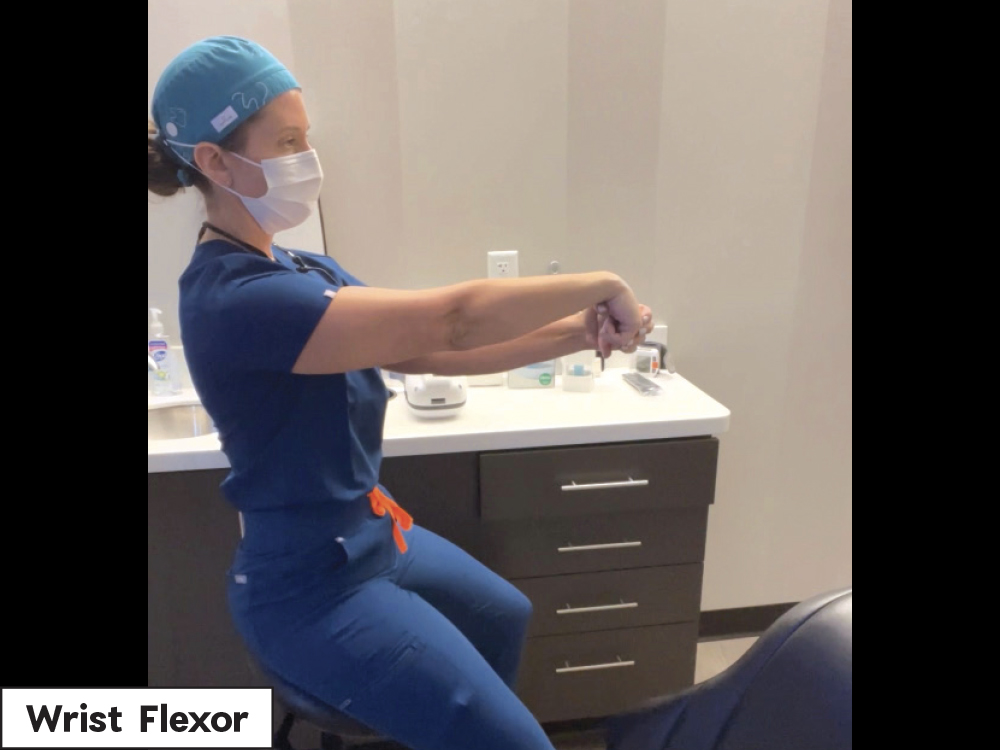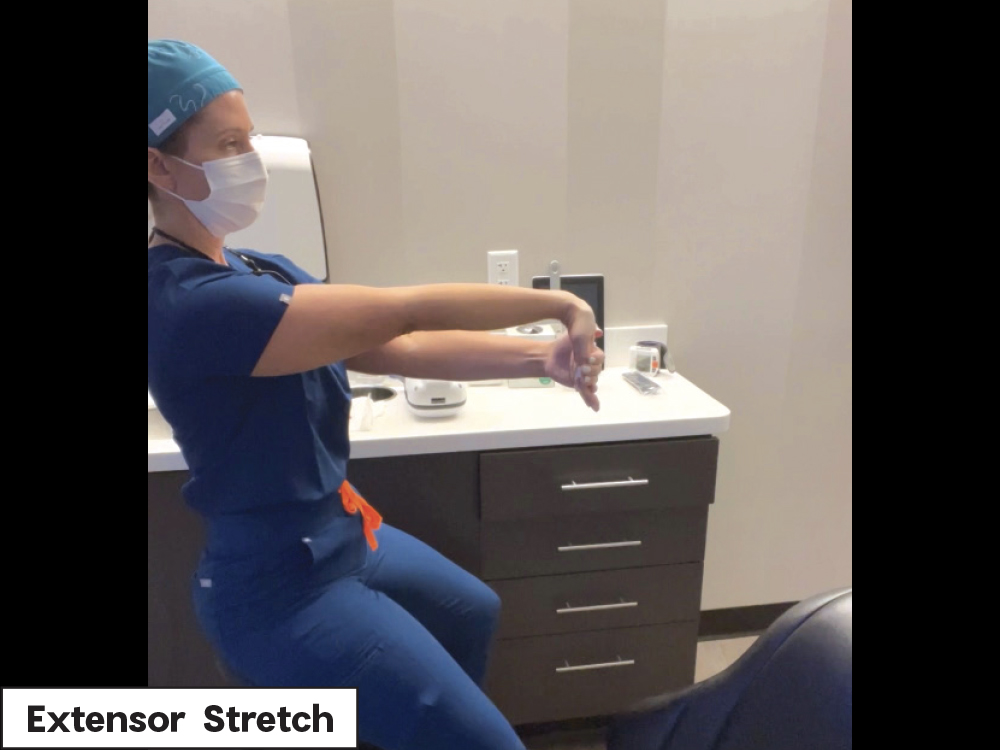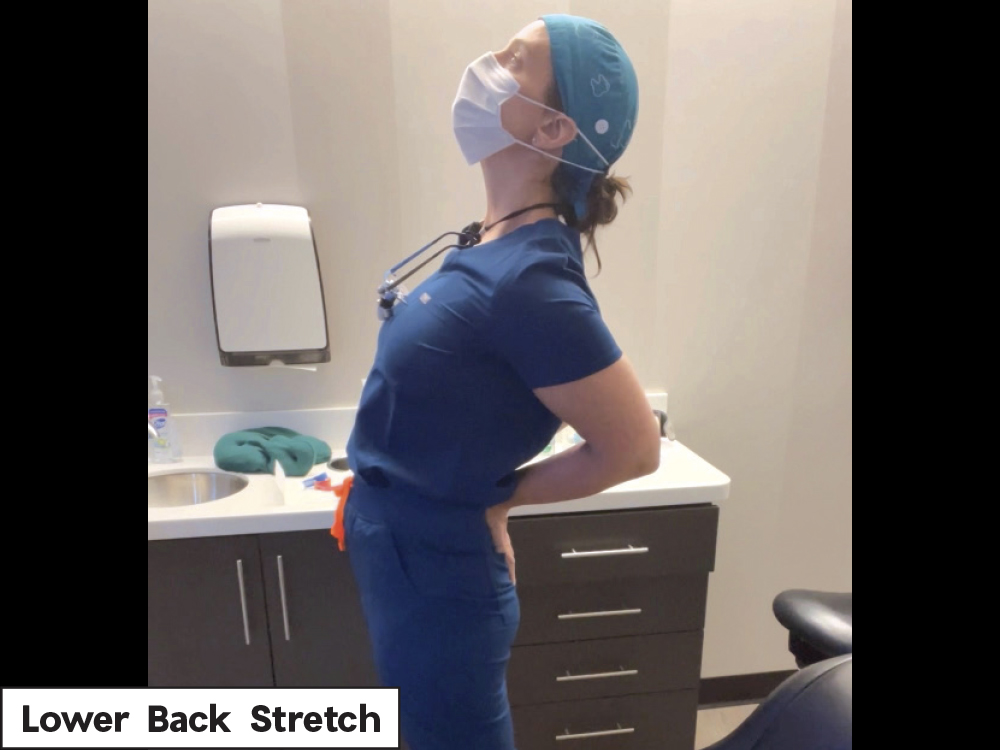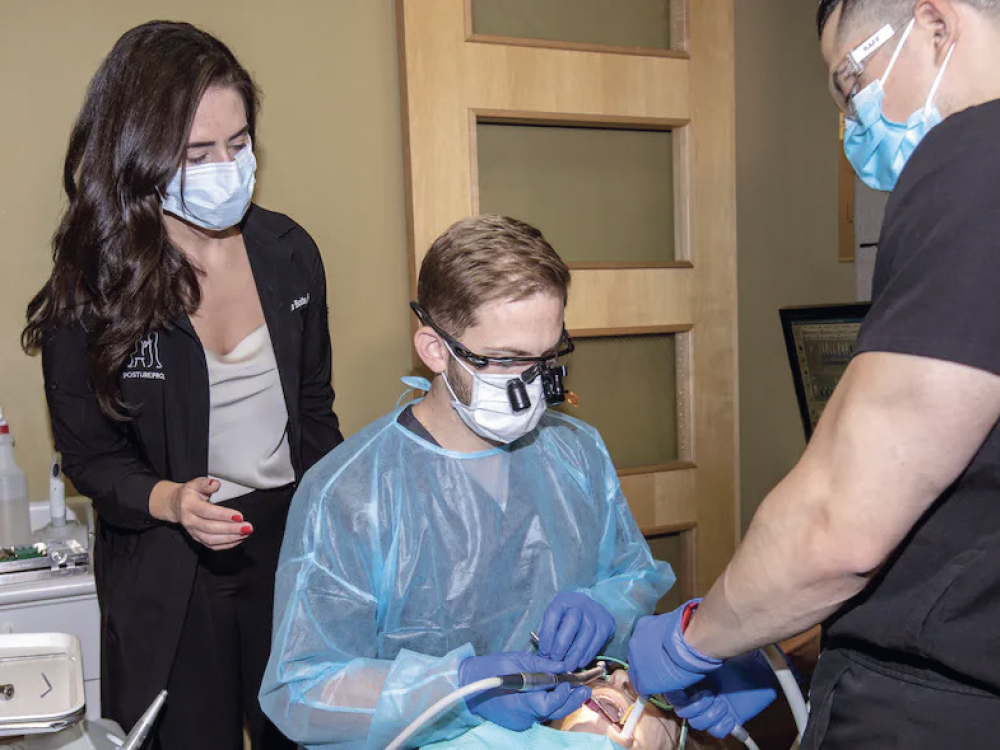Ergonomics: Your Guide to a Pain-Free Workplace (1 CEU)
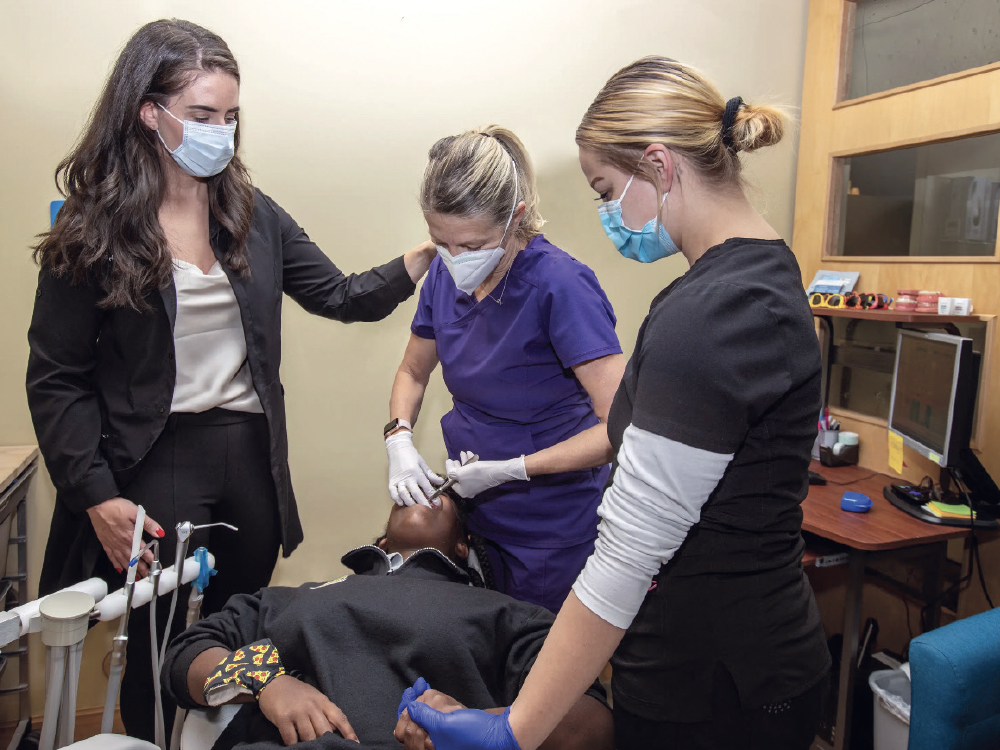
– Photo property of Stephanie Botts, Polished Posture™
When people hear the word “ergonomics,” they tend to sit up a little straighter. But ergonomics is more than just posture — it’s an important tool you can use to improve the quality of your life. According to ergonomics consultant Stephanie Botts, a consistently high number of dentists, dental assistants and hygienists report that they experience pain as a result of their job.
In fact, 84% of dentists report pain while working,1 and over 98% of dental assistants report pain or a musculoskeletal disorder (MSD) in at least one body region.2
This pain and discomfort, when left untreated, can progress to debilitating conditions, such as:
- Carpal tunnel syndrome
- Lower back pain
- Tendonitis
- Rotator cuff injuries
- Epicondylitis (tennis elbow)
- Trigger finger
- Muscle strains
As a practicing dental hygienist for over 14 years, Botts knows firsthand what that pain and discomfort looks like. “We develop habitual physical movements that often sabotage our body’s ability to function in a healthy way. It’s unfortunate that we don’t get enough training in ergonomics during dental or hygiene school,” said Botts. “Thankfully, this trauma to our bodies is preventable.”
PREVENTABILITY AND MICROBREAKS
Dental professionals are susceptible to injury from three sources: the repetitive tasks of their job, the overuse or underuse of certain muscles, and poor posture. Aggressive prevention can help. Taking short breaks is crucial to preventing long-term damage. For every 20 minutes of the workday, Botts recommends taking a 20-second “microbreak” to stretch.
NEUTRAL POSTURE
Achieving “neutral posture” is another way to prevent occupational injury. In neutral posture, the skeleton — not the musculature — holds up the body. “Neutral posture is the ideal position,” said Botts. “Whether you’re sitting or standing, neutral posture can be achieved by aligning your ear, shoulder, hip and foot. This position helps us avoid the harmful habits of slouching, straining our neck forward or abducting our arms.” For those moments when dentists are unable to maintain neutral posture in the operatory, microbreaks prove helpful. “We need to get out of bad postures as quickly as we can, but for those situations when we can’t, the stretching microbreaks are very helpful,” said Botts.
ERGONOMICS IN YOUR PRACTICE
Dentists shouldn’t wait until painful conditions develop before understanding optimal ergonomic positioning. Ergonomic awareness should be a constant in your practice, and getting your entire team involved is a great way to keep everyone accountable. “It’s impossible to know exactly what your posture looks like when you’re working on a patient,” said Botts. “That’s why it’s helpful to have an ergonomics consultant observe your form. This provides a professional determination of how you can adjust your body into neutral posture.”
PRACTICAL TIPS TO IMPLEMENT
The following ergonomics strategies from Botts can easily be implemented in your practice.
Minimize twisting or reaching for things.
We’re often tempted to twist or reach for things like instruments or materials. Instead, try rotating your entire body. Similarly, avoid reaching for items with the opposite hand. To grab something on your left, use your left hand; to grab something on your right, use your right hand.
Use your mirror.
Relying solely on direct vision doesn’t allow us to practice proper ergonomics. Use a mirror when working on a patient to prevent yourself from twisting and contorting your body. Utilize mirror defoggers, and don’t be afraid to replace mirrors that have scratches on them. Be sure to find a “rest” for your nondominant hand while using a mirror. This means that your non-dominant hand should be resting on either the patient’s teeth or cheek to keep the strain off your arm.
Invest in newer prism loupes.
Prism loupes allow the wearer to see the operating field without bending the neck. This posture shift can prevent neck and lower back injuries.
Adjust your chair.
Shared stools in the operatory should always be readjusted for the person sitting in them. For optimal results, remember to adjust the backrest, tilt the seat pan slightly forward and distribute your weight evenly.
Adjust the angle of the patient’s chair and headrest.
When working on the upper arch, fully recline the patient. Then, tilt the headrest down so the patient’s chin is angled up. To work more effectively on the lower arch, raise the fully reclined backrest by about 20%. Next, tilt the headrest up to allow the patient to move their chin toward their chest.
These angles will enable you to see the area you’re working on without straining your neck or back. In both cases, make sure the patient’s head is aligned with the top of the headrest. Adjust the height of the patient’s chair. If you adjust the angle and headrest of the patient’s chair, it’s likely that you will also need to adjust the height of the patient’s chair. Raise or lower the height of the chair so that the patient’s mouth is level with your elbows when at a 90-degree angle.
PATIENT ACCOMMODATIONS
We also need to consider the ergonomic well-being of our patients, even if they’re only in the chair for an hour. For children and elderly or medically compromised patients, ergonomic accommodations can improve their experience at your practice.
The most common accommodation request made involves reclining the patient’s chair. “For patients who suffer from chronic obstructive pulmonary disease (COPD) or vertigo, the feeling of being tipped back can trigger alarming sensations,” said Botts. For these patients, lean the chair back slowly in small increments and talk with the patient about something that interests them.
CONCLUSION
Over the course of a dentist’s career, about 60,000 hours are spent in tense and distorted positions.3 Breaking that pattern begins with an awareness of your own ergonomic habits. “Ergonomics isn’t rocket science,” said Botts. “It’s about staying in tune with your body and being consistent with the adjustments needed to help you achieve neutral posture. I have seen too many dental professionals retire early due to preventable injuries. I love what I do because I get to help dentists do what they love to do for a little bit longer.”
Available CE Course
References
- ^Burger D. Dentist Health and Well-Being Survey Report finds dentists struggle with anxiety, discomfort at work. ADA News. 22 Feb 2022.
- ^Ohlendorf D, Haas Y, Naser A, Haenel J, Maltry L, Holzgreve F, Erbe C, Betz W, Wanke EM, Brüggmann D, Nienhaus A, Groneberg DA. Prevalence of muscular skeletal disorders among qualified dental assistants. Int J Environ Res Public Health. 2020 May 16;17(10):3490.
- ^Gupta A, Bhat M, Mohammed T, Bansal N, Gupta G. Ergonomics in dentistry. Int J Clin Pediatr Dent. 2014 Jan;7(1):30-4.

